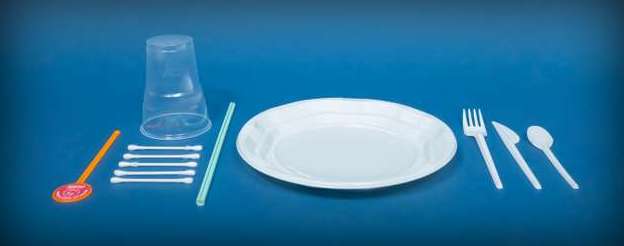In an effort to reduce marine litter, the European Commission, the EU’s legislative body, proposed new rules Monday banning 10 single-use plastics.
In addition to requiring the listed products to be produced using sustainable materials, the new rules will set targets for reduced consumption of plastic food containers and drinks cups in EU member states.
Plastics producers also will be required to help finance waste management and clean-up efforts.
“Plastic waste is undeniably a big issue and Europeans need to act together to tackle this problem, because plastic waste ends up in our air, our soil, our oceans, and in our food,” Frans Timmermans, the European Commission’s first vice-president”.
After addressing plastic bags in 2015, 72% of Europeans said they have cut down on their use of plastic bags (Eurobarometer). The EU is now turning its attention to the 10 single-use plastic products and fishing gear that together account for 70% of the marine litter in Europe.
The new rules will introduce:
Plastic ban on certain products:> Where alternatives are readily available and affordable, single-use plastic products will be banned from the market. The ban will apply to plastic cotton buds, cutlery, plates, straws, drink stirrers and sticks for balloons which will all have to be made exclusively from more sustainable materials instead. Single-use drinks containers made with plastic will only be allowed on the market if their caps and lids remain attached;
Consumption reduction targets: Member States will have to reduce the use of plastic food containers and drinks cups. They can do so by setting national reduction targets, making alternative products available at the point of sale, or ensuring that single-use plastic products cannot be provided free of charge;
Obligations for producers: Producers will help cover the costs of waste management and clean-up, as well as awareness raising measures for food containers, packets and wrappers (such as for crisps and sweets), drinks containers and cups, tobacco products with filters (such as cigarette butts), wet wipes, balloons, and lightweight plastic bags. The industry will also be given incentives to develop less polluting alternatives for these products;
Collection targets: Member States will be obliged to collect 90% of single-use plastic drinks bottles by 2025, for example through deposit refund schemes;
Labeling Requirements: Certain products will require a clear and standardised labeling which indicates how waste should be disposed, the negative environmental impact of the product, and the presence of plastics in the products. This will apply to sanitary towels, wet wipes and balloons;
Awareness-raising measures: Member States will be obliged to raise consumers’ awareness about the negative impact of littering of single-use plastics and fishing gear as well as about the available re-use systems and waste management options for all these products.
For fishing gear, which accounts for 27% of all beach litter, the Commission aims to complete the existing policy framework with producer responsibility schemes for fishing gear containing plastic. Producers of plastic fishing gear will be required to cover the costs of waste collection from port reception facilities and its transport and treatment. They will also cover the costs of awareness-raising measures.
The proposed Directive will bring both environmental and economic benefits. The new measures will for example:
- avoid the emission of 3.4 million tons of CO2 equivalent;
- avoid environmental damages which would cost the equivalent of €22 billion by 2030;
- save consumers a projected €6.5 billion.
Today’s initiative delivers on the commitment made in the European Plastics Strategy to tackle wasteful and damaging plastic litter through legislative action, which was welcomed by the European Parliament and Council and by citizens and stakeholders. The measures proposed will contribute to Europe’s transition towards a Circular Economy, and to reaching the UN Sustainable Development Goals and the EU’s climate commitments and industrial policy objectives.

